How to organize baby clothes – 10 simple ways to establish a routine
Bring a sense of calm to your nursery (and to yourself) in advance of your new arrival with these expert-approved tips for organizing baby clothes
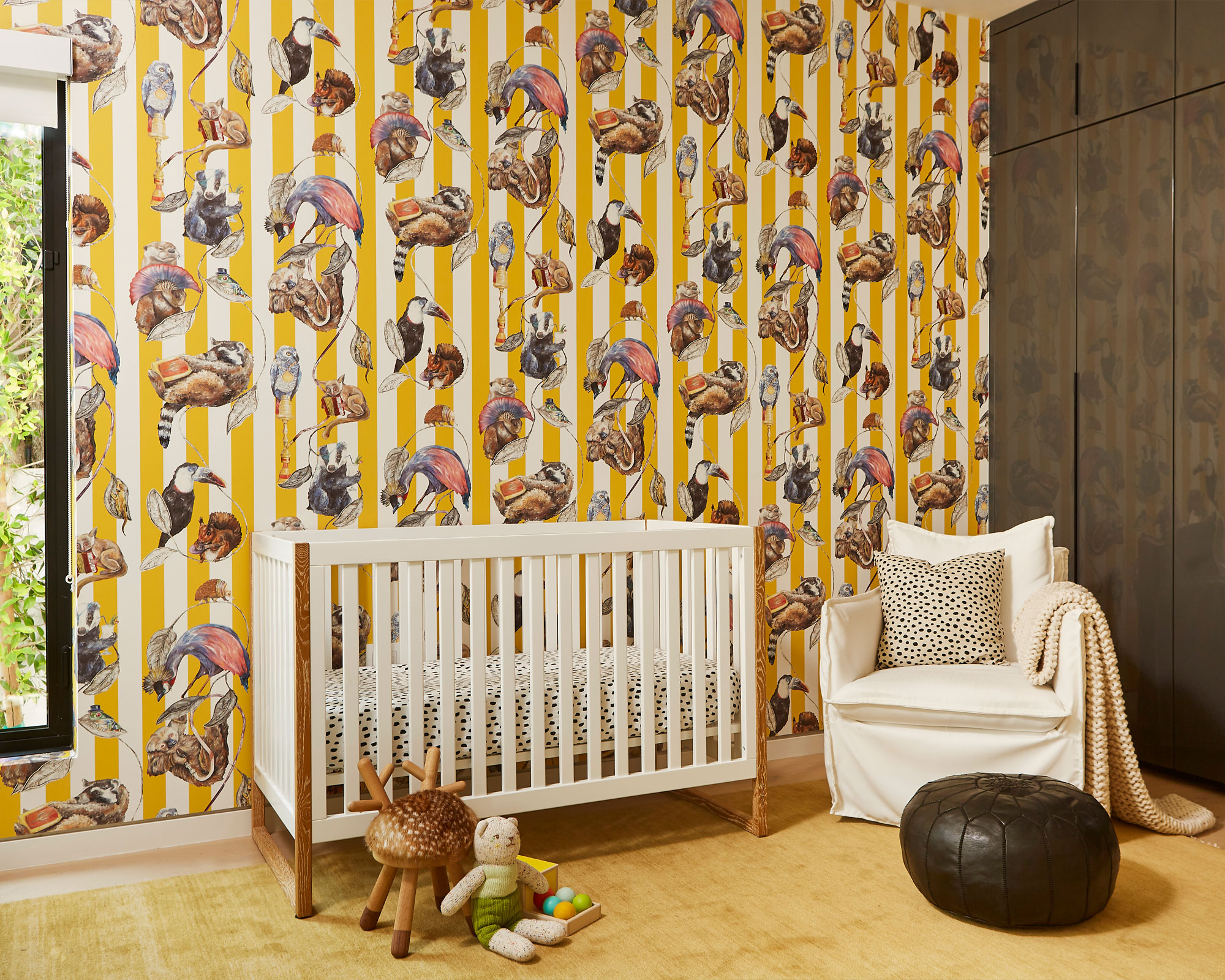
- 1 Double check sizes
- 2 Prioritize ‘current’ clothing – both size and season
- 3 Separate night and day
- 4 Sideline too-small clothing straight away…
- 5 … and sentimental items
- 6 Divide and conquer
- 7 Use the ‘file fold’ method
- 8 Maximize space in a closet
- 9 Label everything
- 10 Make space for diapers, dummies and other essentials
- FAQs
While your baby might be small, we’re going to guess their clothing collection is not. From sleepsuits and pramsuits to socks and sunhats, not to mention the bags upon bags of hand-me-downs and gifts from friends and family… new arrivals come with a lot of new stuff, and it can get out of control pretty quickly.
‘Whether you organize baby clothes in dresser drawers, a closet, or somewhere else altogether, you’ll want to ensure they’re neat, tidy, and, most importantly, close to hand – rummaging around for what you need is no fun, particularly in the early hours of the morning, take it from me!’, says Lucy Searle, editor in chief, Homes & Gardens.
While a sensible organization system is essential, one thing’s for sure; busy parents don’t have time for ‘complicated’. So, when it comes to organizing a nursery, the key is to keep things simple.
How to organize baby clothes
The best way to organize baby clothes varies from person to person, depending on preferences, as well as nursery ideas. However, there is one rule across the board – start early. The last thing you want is a mountain of clothes to sort through when you’re dealing with nappies and night shifts. Ideally, you want everything in order at least a week or two before your due date. That way, if little one decides to come a little early, you’re well prepared!
1 Double check sizes
Grouping and storing baby clothes by size makes total sense, but it’s worth noting that not all brands fit true-to-size. As you’ve likely found when organizing clothes for yourself, some items will come up slightly smaller, and vice versa.
Before stashing away a ‘size’ category, lay everything out and assess. If you notice certain items coming up a lot smaller than the rest, place them in the size below. Similarly, the other way around.
According to professional organizer Amanda Wiss, founder of Urban Clarity, putting in this ground work ahead of baby arriving is well worth the effort. ‘You only have a finite amount of time for your baby to fit into each clothing size and it's always so disappointing when you find an outfit that they have outgrown without wearing it even once!’, she explains.
2 Prioritize ‘current’ clothing – both size and season
It’s not unusual to end up with enough clothing for your baby’s first year of life before they’ve even been born. That’s fine, useful in fact, but you’ll need to reserve prime storage space for your baby’s current size only. Trying to store it all at once will only result in jam-packed drawers and closet space, which makes it really difficult to see and grab what you need.
The same goes for seasonal items, too. That winter sleeping bag may well still fit, but if Spring has sprung, it’s time to move it out. Keep future sizes grouped in air-tight plastic containers or vacuum-sealed bags and store them elsewhere, ready for when you need them.
3 Separate night and day
If you wanted to take things one step further, you could group clothing depending on what time of the day your baby is likely to need them. Keep them contained by category, but position them alongside each other to create distinct ‘night and day zones’. Vests, onesies, swaddles and towels in one drawer, outfits, socks, hats and bibs in another, for example.
4 Sideline too-small clothing straight away…
You’ll be amazed how quickly your baby grows, sometimes overnight, it can feel like! Once you notice an item has become too small, take it out of your clothing collection straightaway.
Keep a designated bin somewhere handy, such as in your closet, so you can set aside items quickly and easily. Then, when you’ve got a bit more time, sort through for donation, resale, or future use, and take steps accordingly.
5 … and sentimental items
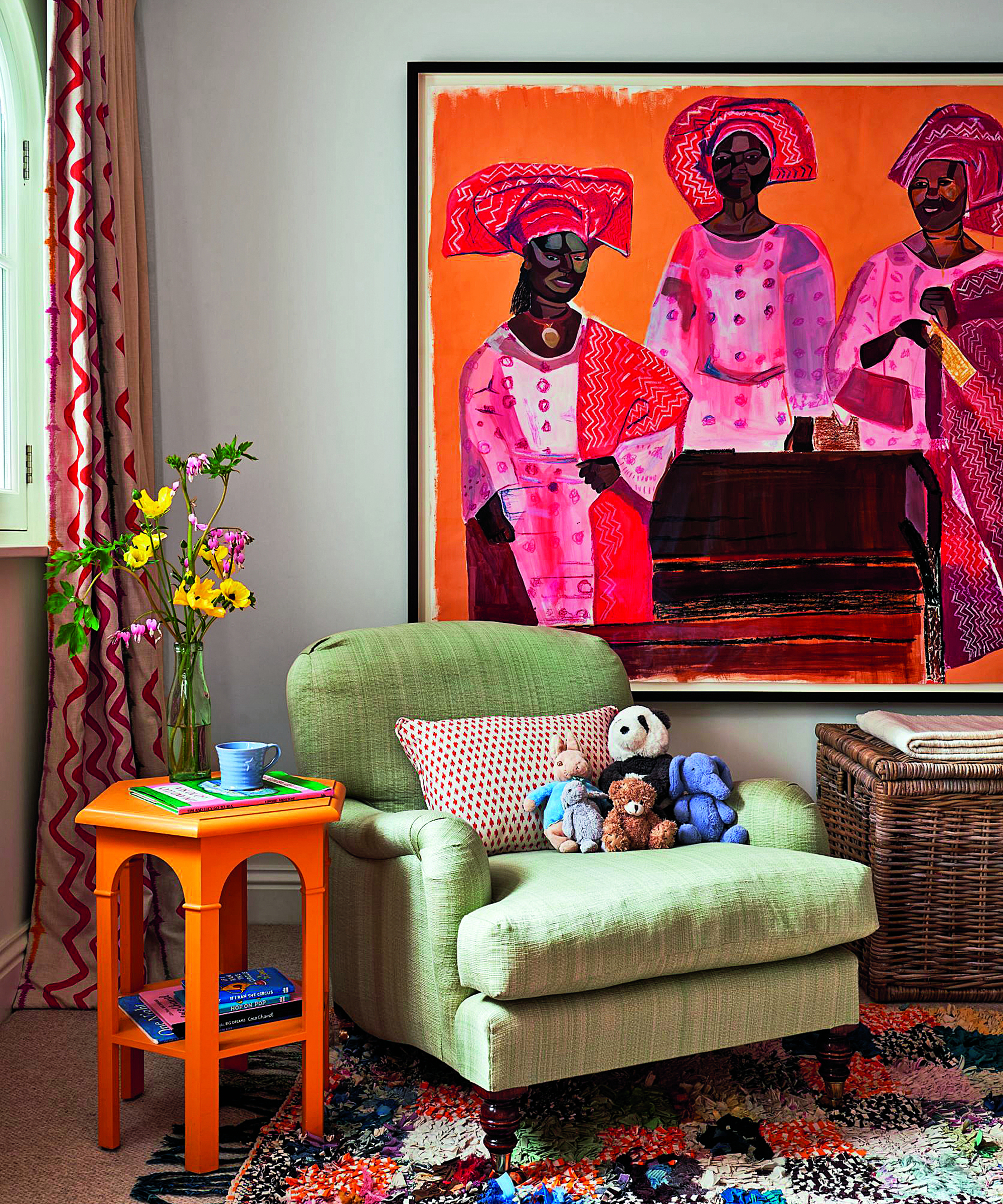
You can take a similar approach with sentimental items, too. There’ll likely be a lot of these, but try and be a little strict on yourself – only keep those items you really can’t bear to part with. ‘This helps encourage the process of letting go, and avoids large bins of clothes that need to be sorted out at a later date’, says professional organizer Andrea Walker, owner of Smartly Organized.
‘If you’re finding it hard to part with your most precious baby clothes, you might want to consider turning them into keepsake memory bears or quilts. It’s the perfect solution for decluttering whilst still retaining all the memories, from baby’s ‘coming home’ outfit to first steps and holidays’, says Jennifer Cura, founder of The Patchwork Bear.
6 Divide and conquer
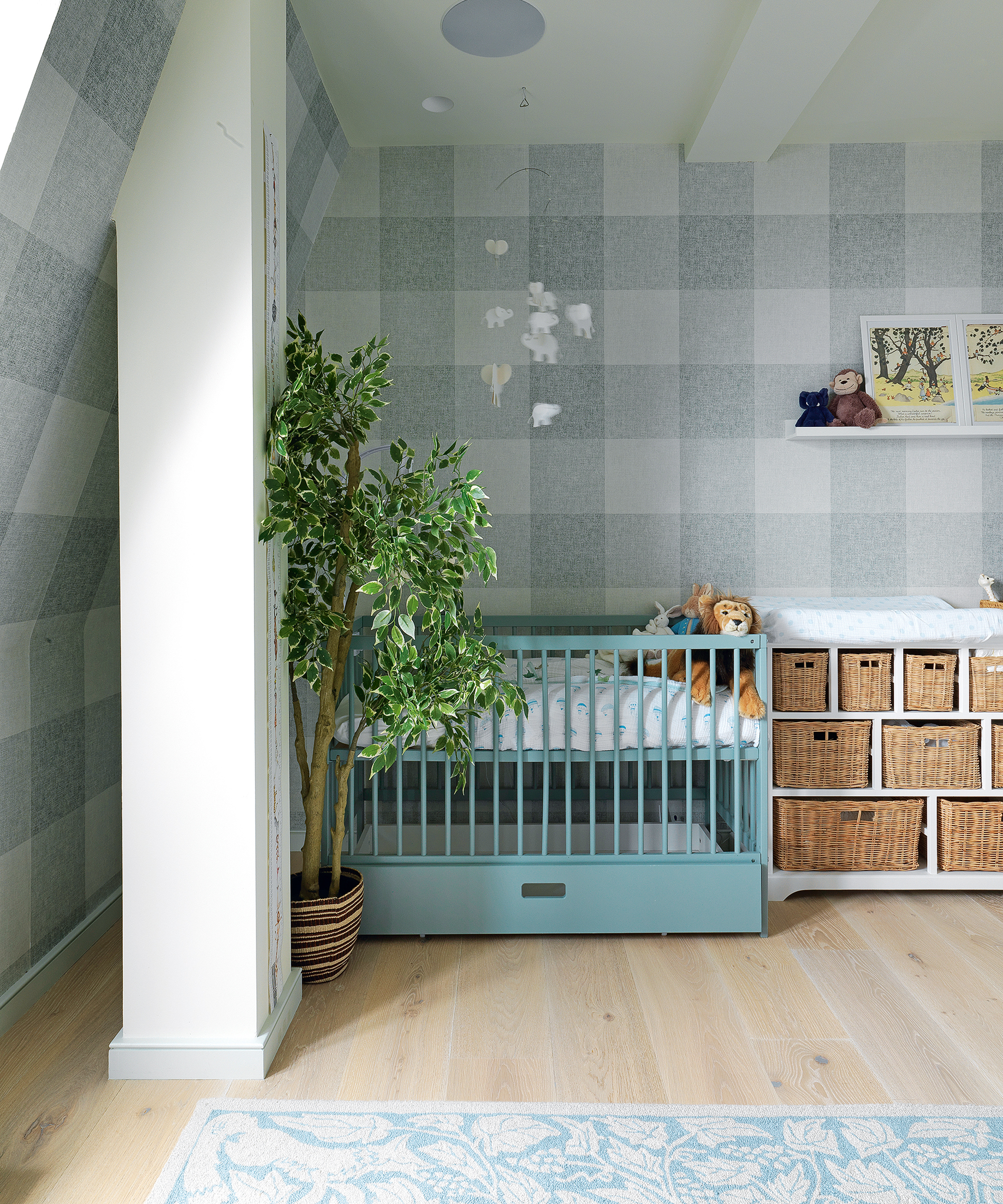
If you’re organizing a dresser for baby’s clothes, you’ll need to use baskets, boxes and/or drawer dividers to keep categories separate. Having designated spots for items will mean you can identify and access what you need without having to rummage through everything, and you can replace it easily, too.
7 Use the ‘file fold’ method
We use the term ‘fold’ loosely when it comes to baby clothes… they’re so tiny, it’s almost impossible to get a neat finish; it’s a waste of time, really. Rolling is your best bet. Having said that, the file folding storage method still stands.
Rather than stack baby clothes in piles, position them upright, like you would paper in a filing cabinet, so you can see everything at once. Not only is it space-saving, you won’t have to rummage through everything to find what you need, resulting in less mess and time saved.
‘Put socks and accessories into ziplock bags marked with their size and place these in their corresponding bins as well’, advises Amanda Wiss.
8 Maximize space in a closet
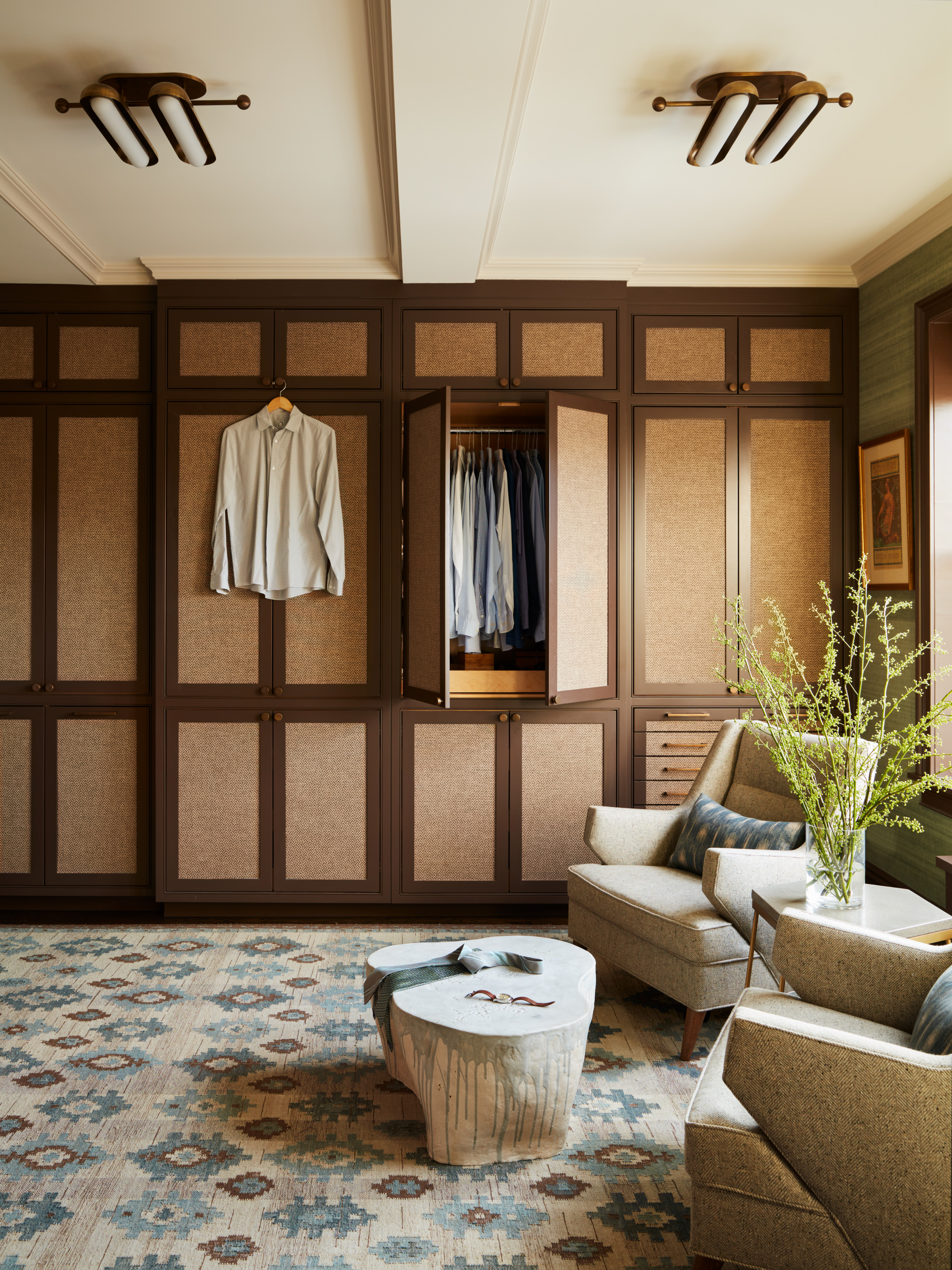
If you prefer to organize a closet, you can utilize shelves in the same way as dresser drawers, using baskets and containers (ideally clear ones) to categorize and contain items. You’ll also want to make the most of hanging space, too.
Small, slim hangers are ideal for jackets, coats and dresses, as well as sleeping bags and even blankets. Because of their petite proportions, the items will fall short, so you could install an extra rod if you wanted to make use of the space. Alternatively, use stackable storage underneath to store items, instead.
Hanging box or cubby-style organizers, such as this two-shelf design with an extra rod from Target, are a great way of maximizing storage space, while age dividers, such as these adorable wooden ones from Amazon, will help you keep track of sizes.
9 Label everything
Regardless of your categorizing and storage system, label everything either with stickers, chalkboard tags or even just a marker, depending on whether it’s ‘on show’ or not.
‘As well as reminding you what’s where, doing this also means friends and relatives can help out without having to ask – you’ll be glad of that when you’re in need of a nap yourself’, says Amanda Wiss.
10 Make space for diapers, dummies and other essentials
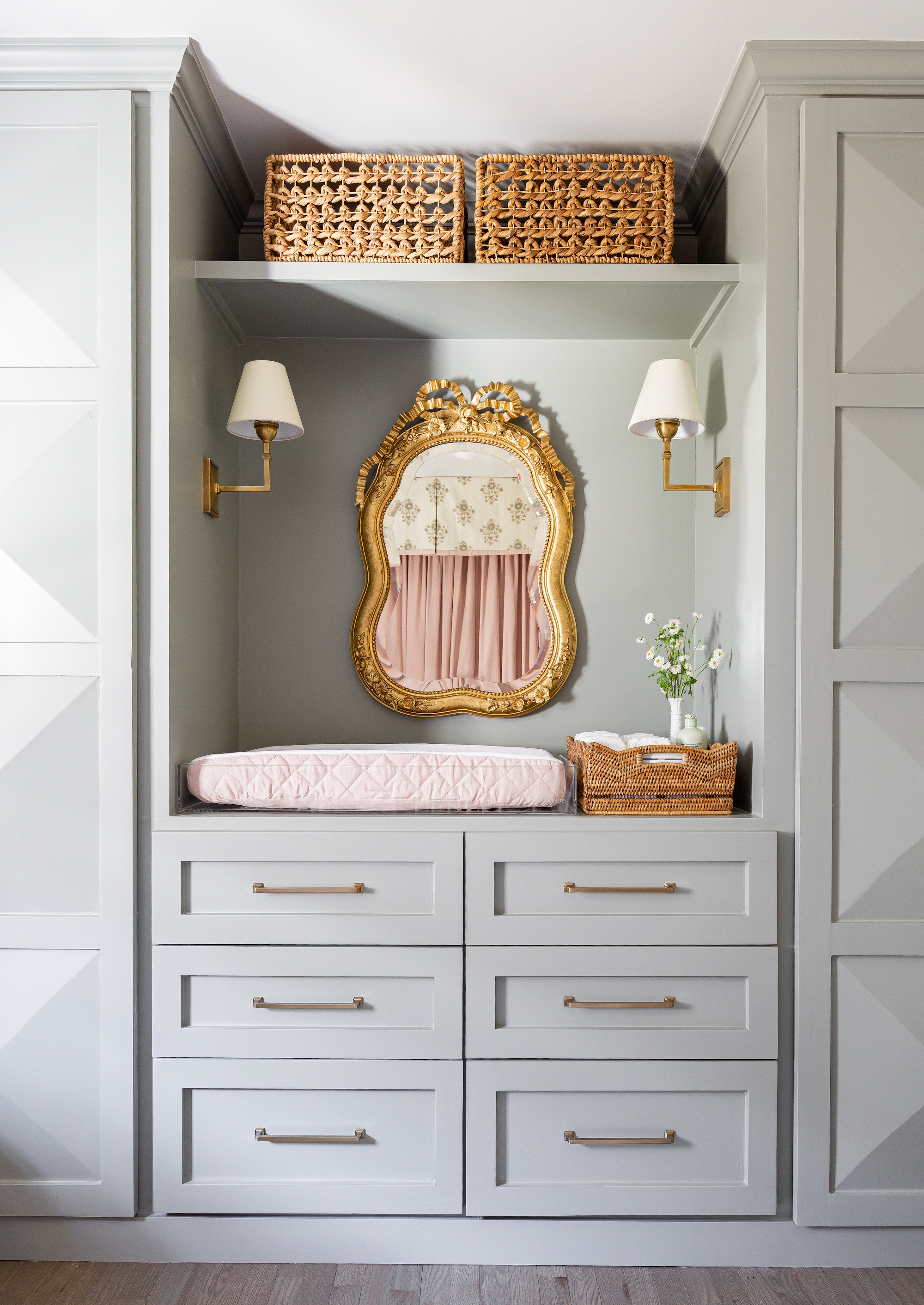
As well as clothes, your organizational system will need to account for other day-to-day essentials too (think diapers and wipes, pacifiers and burp cloths, to name just a few), so bear this in mind when you’re assigning space in your closet and/or dresser.
FAQs
How do I keep my baby’s clothes organized?
Categorize and sort baby clothes by size, and prioritize storage space for items your baby fits now. Future items should be stored elsewhere (somewhere fairly close to hand) in readiness for when your baby needs them, while those items that are too small should be removed immediately. Doing this will mean you have a smaller collection of clothing to deal with at any one time, which makes it infinitely easier to stay on top of organization.
How do you arrange baby clothes in drawers?
‘Reserve top, easy-access shelving or drawers for frequently used items, such as socks, hats, burp cloths, pacifiers, teething items, and so on. Middle shelves are useful for storing current clothing, while bottom drawers can hold items you don’t need that often such as extra blankets, cot sheets, sleep sacks and overflow supplies’, says professional organizer Lucy Mansey @organisedbyLucy.
Like with all organizing tasks relating to children, it’s important to consider how the systems you put in place will grow with them. Assigning baby clothing a home and implementing a sensible rotation system will help you keep on top of what fits – quite literally, in this case!
Sign up to the Homes & Gardens newsletter
Design expertise in your inbox – from inspiring decorating ideas and beautiful celebrity homes to practical gardening advice and shopping round-ups.
For 10 years, Tara King worked as a Content Editor in the magazine industry, before leaving to become freelance, covering interior design, wellbeing, craft and homemaking. As well as writing for Ideal Home, Style at Home, Country Homes & Interiors, Tara’s keen eye for styling combined with a passion for creating a happy – and functional – family home has led to a series of organization and cleaning features for H&G.
-
 7 native perennials to plant in April – for glorious flowering displays to attract bees, butterflies, and hummingbirds
7 native perennials to plant in April – for glorious flowering displays to attract bees, butterflies, and hummingbirdsDiscover some of the best perennials to plant in April to make your garden a hotspot for wildlife
By Drew Swainston Published
-
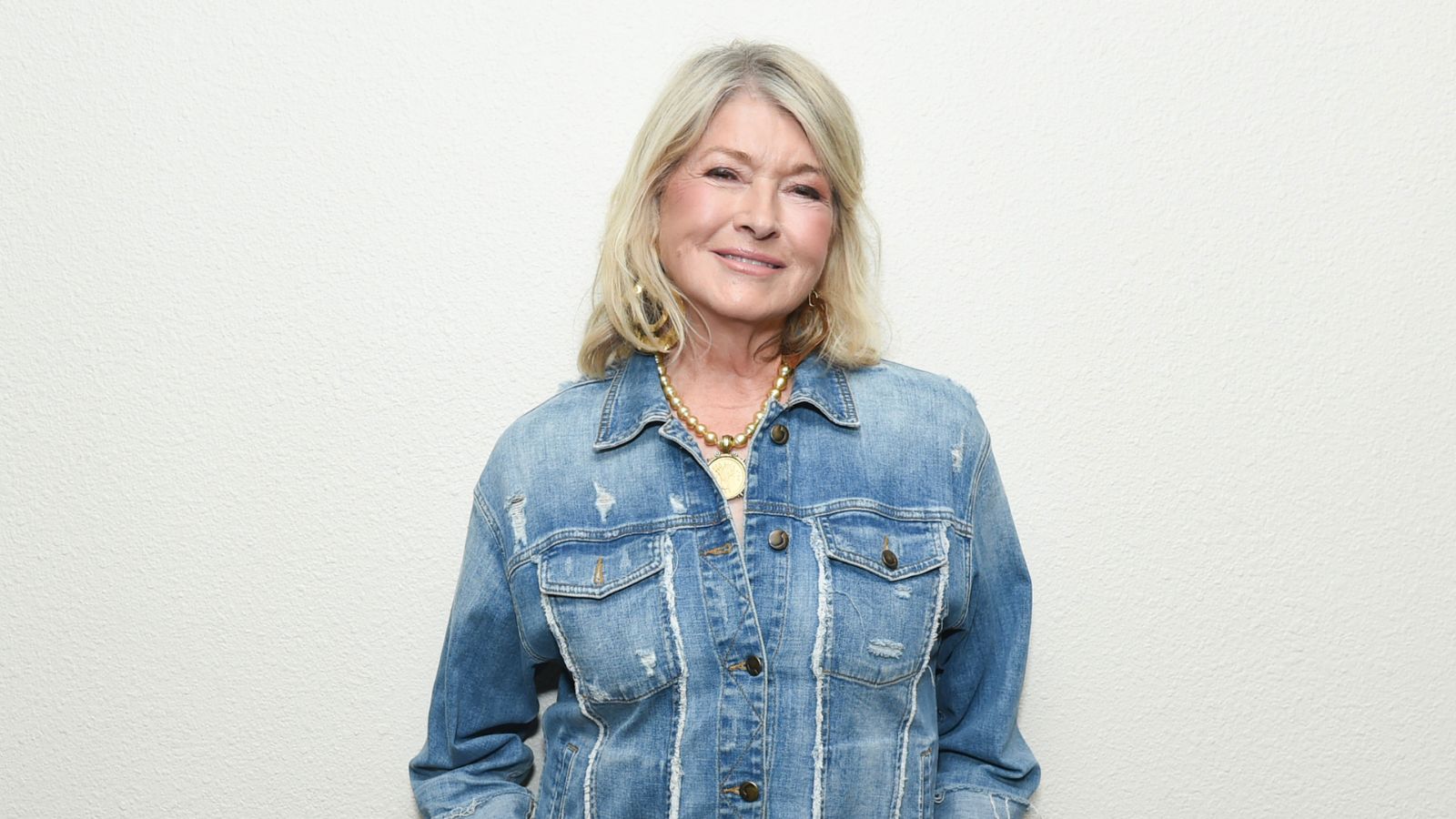 Martha Stewart's smart laundry room shelving makes exceptional use of every inch of wall space – it will turn your smallest area into an ultra-functional space
Martha Stewart's smart laundry room shelving makes exceptional use of every inch of wall space – it will turn your smallest area into an ultra-functional space'You can greatly expand the usability of your space by just installing some of these great shelving units': You can follow her technique for under $34
By Megan Slack Published